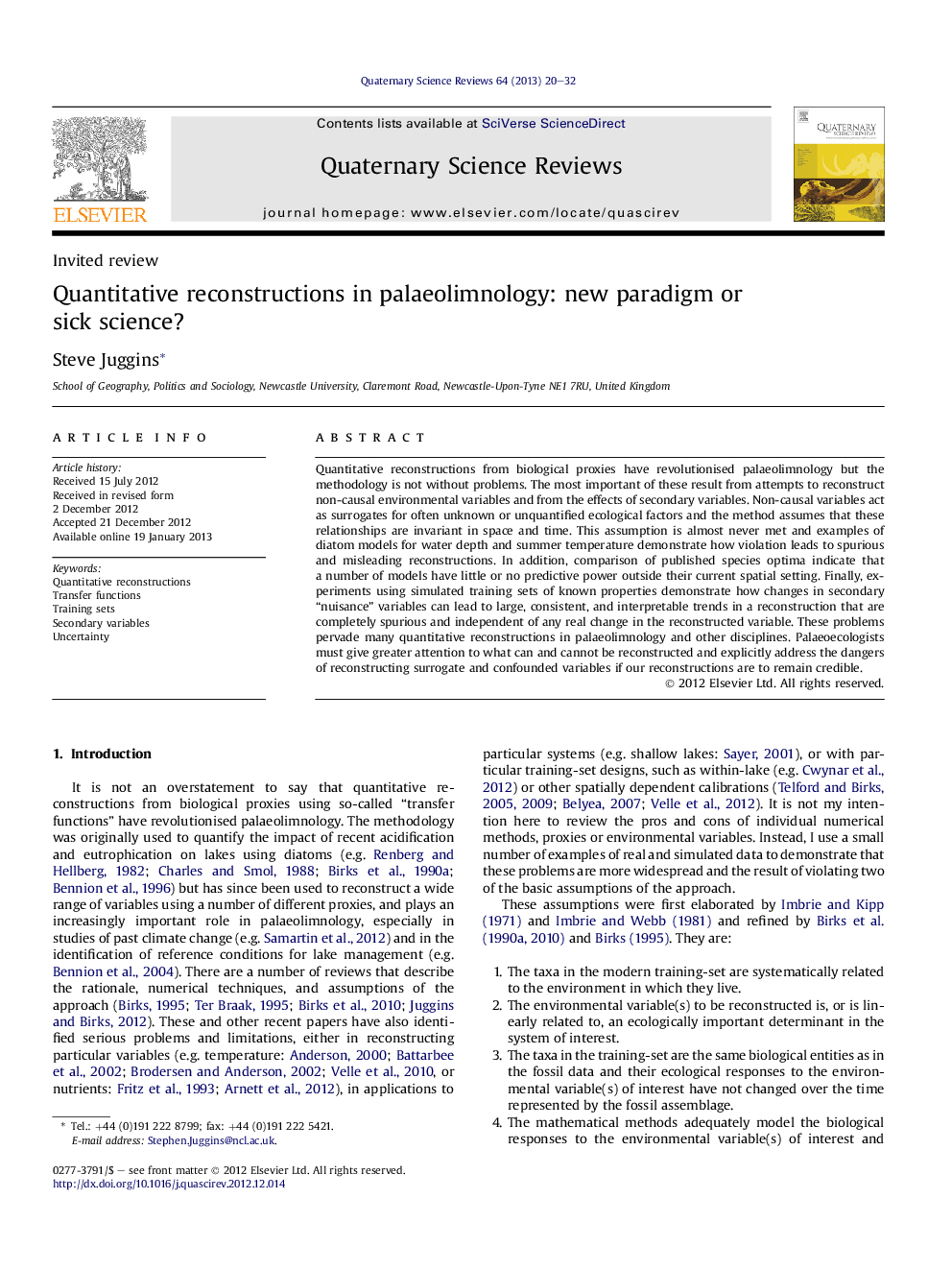| کد مقاله | کد نشریه | سال انتشار | مقاله انگلیسی | نسخه تمام متن |
|---|---|---|---|---|
| 4737072 | 1640870 | 2013 | 13 صفحه PDF | دانلود رایگان |
Quantitative reconstructions from biological proxies have revolutionised palaeolimnology but the methodology is not without problems. The most important of these result from attempts to reconstruct non-causal environmental variables and from the effects of secondary variables. Non-causal variables act as surrogates for often unknown or unquantified ecological factors and the method assumes that these relationships are invariant in space and time. This assumption is almost never met and examples of diatom models for water depth and summer temperature demonstrate how violation leads to spurious and misleading reconstructions. In addition, comparison of published species optima indicate that a number of models have little or no predictive power outside their current spatial setting. Finally, experiments using simulated training sets of known properties demonstrate how changes in secondary “nuisance” variables can lead to large, consistent, and interpretable trends in a reconstruction that are completely spurious and independent of any real change in the reconstructed variable. These problems pervade many quantitative reconstructions in palaeolimnology and other disciplines. Palaeoecologists must give greater attention to what can and cannot be reconstructed and explicitly address the dangers of reconstructing surrogate and confounded variables if our reconstructions are to remain credible.
► The effect of violating key assumptions of quantitative reconstructions is explored.
► Serious problems are revealed using examples of real and simulated training sets.
► Reconstruction models for a number of variables have limited spatial transferability.
► Reconstruction for non-causal variables are particularly problematic.
► Changes in secondary “nuisance” variables can lead to spurious reconstructions.
Journal: Quaternary Science Reviews - Volume 64, 15 March 2013, Pages 20–32
